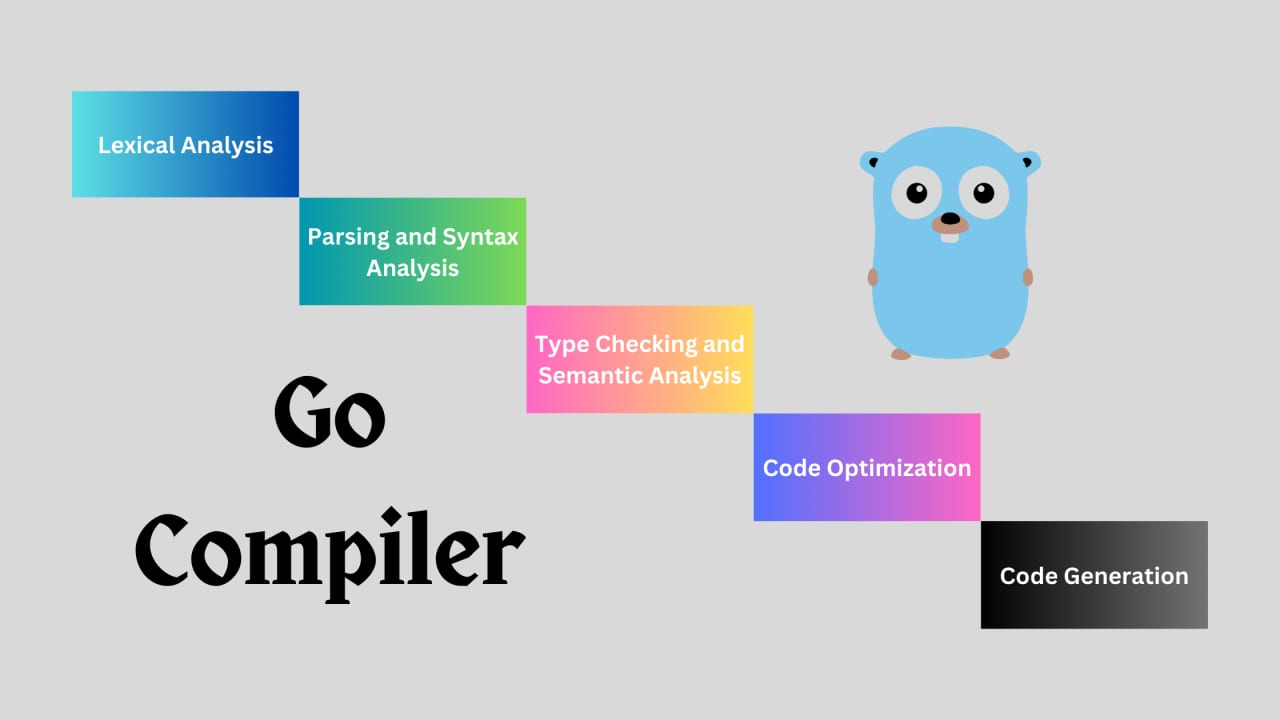Prototyping with Go: Accelerating Your Development Process
- With Code Example
- November 28, 2023
Harnessing Go (Golang) for Rapid Concept Testing and Validation
Prototyping is a fundamental step in the software development life cycle. It allows developers to quickly build and test concepts, gather feedback, and refine their ideas. While many programming languages are commonly used for prototyping, Go, also known as Golang, is increasingly becoming a popular choice. In this article, we will explore the benefits of using Go for prototyping, provide practical examples, and discuss how it can accelerate your development process.

Why Use Go for Prototyping?
Go is a statically typed, compiled language known for its simplicity and efficiency. It was developed at Google to address real-world engineering challenges, making it a strong candidate for prototyping. Here are several reasons why Go is a valuable choice for this stage of development:
Speed: Go’s compilation process is fast, enabling rapid iterations. You can quickly build and test your prototypes, making it an excellent choice for agile development.
Conciseness: Go’s syntax is concise and easy to understand, allowing you to express complex ideas with minimal code. This is beneficial when you want to focus on the concept rather than wrestling with intricate language details.
Strong Standard Library: Go’s standard library is well-equipped with a wide range of packages, simplifying many common tasks. You can leverage these packages to expedite your prototyping efforts.
Cross-Platform Compatibility: Go supports cross-compilation, meaning you can prototype on one platform and deploy on another. This makes it versatile for various use cases and environments.
Concurrency Support: Go has built-in support for concurrent programming, making it suitable for developing prototypes of applications that require parallel processing.
Practical Examples
To illustrate the advantages of using Go for prototyping, let’s dive into a few practical examples. We’ll cover different domains, from web development to system tools.
1. Web Service Prototype
Imagine you’re working on a web service that needs to handle user registration and authentication. In this example, we’ll create a basic HTTP server to handle these functionalities.
package main
import (
"fmt"
"net/http"
)
func main() {
http.HandleFunc("/register", func(w http.ResponseWriter, r *http.Request) {
// Simulate user registration logic
fmt.Fprintln(w, "User registered successfully!")
})
http.HandleFunc("/login", func(w http.ResponseWriter, r *http.Request) {
// Simulate user login logic
fmt.Fprintln(w, "User logged in successfully!")
})
http.ListenAndServe(":8080", nil)
}
In this simple Go program, we create an HTTP server with two endpoints: /register and /login. When you run this code, it sets up a server that simulates user registration and login functionality. The straightforward nature of Go allows you to quickly prototype a web service.
2. Data Processing Prototype
Go’s efficiency and concurrency support make it an ideal choice for data processing tasks. Let’s create a prototype that reads data from a CSV file, processes it, and writes the results to another file.
package main
import (
"encoding/csv"
"log"
"os"
)
func main() {
inputFileName := "data.csv"
outputFileName := "processed_data.csv"
inputFile, err := os.Open(inputFileName)
if err != nil {
log.Fatal(err)
}
defer inputFile.Close()
inputReader := csv.NewReader(inputFile)
records, err := inputReader.ReadAll()
if err != nil {
log.Fatal(err)
}
// Process data here
outputFile, err := os.Create(outputFileName)
if err != nil {
log.Fatal(err)
}
defer outputFile.Close()
outputWriter := csv.NewWriter(outputFile)
if err := outputWriter.WriteAll(records); err != nil {
log.Fatal(err)
}
}
In this example, we read data from a CSV file, process it (which is a placeholder for your specific data manipulation), and then write the results to another CSV file. Go’s standard library provides convenient packages for handling file operations and CSV parsing.
3. Command-Line Tool Prototype
Go is excellent for building command-line tools due to its ease of use and performance. Let’s create a simple prototype for a file renaming tool that takes a directory path and renames all files within it.
package main
import (
"fmt"
"io/ioutil"
"log"
"os"
"path/filepath"
)
func main() {
if len(os.Args) != 2 {
fmt.Println("Usage: file-renamer <directory>")
return
}
directory := os.Args[1]
files, err := ioutil.ReadDir(directory)
if err != nil {
log.Fatal(err)
}
for _, file := range files {
oldPath := filepath.Join(directory, file.Name())
newPath := filepath.Join(directory, "new_"+file.Name())
if err := os.Rename(oldPath, newPath); err != nil {
log.Fatal(err)
}
}
fmt.Println("Files renamed successfully.")
}
This prototype is a basic command-line tool that renames all files in a specified directory by adding “new_” as a prefix to their names. Go’s standard library simplifies tasks like reading directory contents and renaming files, making this prototype a breeze to implement.
4. Concurrent Prototype
One of Go’s standout features is its support for concurrent programming through goroutines and channels. Let’s create a prototype for a simple concurrent task, such as fetching data from multiple sources concurrently.
package main
import (
"fmt"
"sync"
"time"
)
func fetchData(source string, wg *sync.WaitGroup) {
defer wg.Done()
// Simulate fetching data
time.Sleep(1 * time.Second)
fmt.Printf("Data fetched from %s\n", source)
}
func main() {
sources := []string{"source1", "source2", "source3"}
var wg sync.WaitGroup
for _, source := range sources {
wg.Add(1)
go fetchData(source, &wg)
}
wg.Wait()
fmt.Println("All data fetched.")
}
In this example, we create multiple goroutines to fetch data concurrently from different sources. Go’s simplicity in managing concurrency with goroutines and WaitGroups makes it an excellent choice for prototyping applications that require parallelism.
Accelerating Development with Go Prototyping
Now that we’ve explored practical examples of prototyping with Go, let’s discuss how using Go can accelerate your development process:
Rapid Iterations: Go’s fast compilation and minimal boilerplate code allow for quick testing and refinement of ideas. This agility is particularly valuable in the prototyping phase.
Readable Code: Go’s clean and concise syntax enhances code readability. Prototypes are often a work in progress, and the ability to quickly grasp the code is invaluable for collaboration and future development.
Efficiency: Go’s efficient runtime and memory management contribute to the smooth execution of prototypes. You can focus on validating your concept without worrying about performance bottlenecks.
Reusability: Code written for prototypes can often be reused in production. Go’s simplicity and robust standard library facilitate a smooth transition from prototype to a fully developed application.
Cross-Platform Compatibility: Go
supports cross-compilation, allowing you to prototype on one platform and deploy on another. This cross-platform compatibility streamlines the development process.
- Concurrency: For prototypes that involve parallel processing or asynchronous operations, Go’s built-in support for concurrency simplifies implementation and testing.
Transitioning from Prototyping to Production
As you complete the prototyping phase, you may find that the concepts and features you’ve developed are worth pursuing in a production-ready application. Transitioning from prototyping to production is a natural progression. Fortunately, Go’s strengths in the prototyping phase can also be beneficial during the transition:
Minimal Rewrite: Go’s clean code and minimalistic approach often require minimal changes when moving from a prototype to a production application.
Efficiency: The efficiency of Go in both prototyping and production ensures that your application will perform well and meet the demands of your users.
Concurrency Handling: If your prototype involved concurrent operations, Go’s concurrency support will help you manage these aspects effectively in the production version.
Standard Library: Leveraging Go’s extensive standard library can save time and effort when implementing production features.
Cross-Platform Deployment: Go’s cross-compilation support simplifies the process of deploying your application to different platforms.
Community Support: Go has a vibrant and supportive community, making it easier to find resources, libraries, and solutions to common challenges when transitioning to production.
Best Practices for Go Prototyping
To ensure a successful and efficient prototyping process with Go, consider the following best practices:
Plan Ahead: Clearly define your objectives and scope before diving into prototyping. Knowing what you want to achieve will keep you focused and efficient.
Keep It Simple: While Go is concise, strive for simplicity in your prototype. Avoid overengineering, and concentrate on demonstrating the core concept.
Reusability: Write your prototype code with an eye toward reusability in production. Maintain clean and modular code that can be easily integrated into a larger application.
Documentation: Although it’s a prototype, maintain documentation for your code. This will aid in understanding and facilitate a smoother transition to production.
Testing: Ensure your prototype includes appropriate testing to validate the concept and identify any issues early in the development process.
Collect Feedback: Share your prototype with team members or stakeholders to gather valuable feedback. Use this input to refine and enhance your concept.
Conclusion
Go is a powerful, efficient, and versatile programming language that’s well-suited for prototyping. Its simplicity, rapid compilation, cross-platform compatibility, and support for concurrency make it an ideal choice for quickly testing ideas and concepts.
By harnessing the capabilities of Go, you can accelerate your development process, create readable and efficient code, and seamlessly transition from prototyping to production. Whether you’re building web services, data processing tools, command-line utilities, or concurrent applications, Go is an invaluable tool that will empower you to bring your ideas to life with speed and confidence.
As you explore the world of prototyping with Go, remember that it’s not just about creating a proof of concept; it’s about validating and refining your vision, ultimately leading to the development of innovative and impactful software solutions. Embrace the power of Go, and watch your prototypes transform into production-ready applications.






